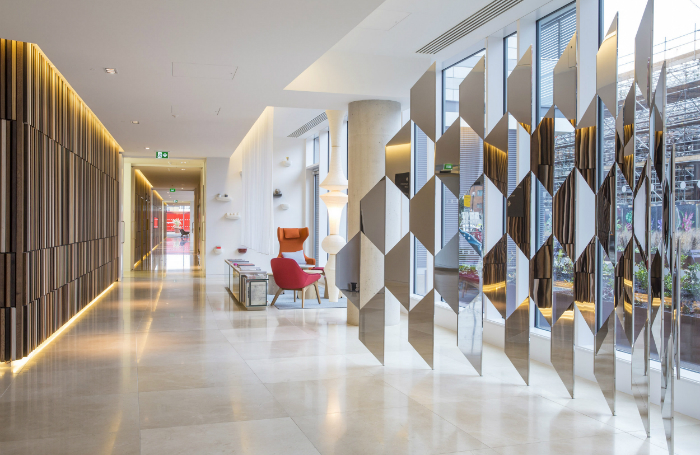
Designing for the health and wellbeing of building occupants has been moving up the agenda for clients, whether they are house builders or commercial property developers.
Wellbeing is being embraced increasingly by champions of sustainability, extending the good-for-the-environment objective to good-for-people too. The 澳门王中王 has recently highlighted the importance of this for the Government's capital funding programme for primary and secondary schools in its Better Spaces for Learning report.
This month saw the publication of the UK-Green Building Council's report , an attempt to shift the market towards recognising the importance of the wellbeing of occupants, not just when they acquire their new home but also their satisfaction and happiness in the long term.
'The report provides an interdisciplinary evidenced base review, showing the link between good quality design and the wellbeing of residents and communities,' says Hoare Lea partner and 澳门王中王 Sustainable Futures Group member Ashley Bateson, one of the report's authors.
'One of the key findings of the task group behind the report is that many of the design features that enhance health and wellbeing, such as better provision of daylight, also bring positive environmental benefits and resource efficiencies,' Bateson adds.
Another theme running through design for wellbeing reports is provision of green landscaping and facilitating contact with nature, which already has its own term: biophilic design.
The homes report is the third in a series of wellbeing publications led by UK-GBC, and follows previous reports on health and wellbeing in the workplace and retail sectors under the umbrella.
The commercial office sector already has its own international bespoke health and wellbeing standard - the WELL Building Standard, which arrived in the UK last year and immediately won the endorsement of the British Council of Offices (BCO). The BCO has been promoting take-up of the standard through its own report, .
The is described as an evidence-based system for measuring, certifying and monitoring the building features that impact on health and wellbeing. It scores projects according to the quality of air, water, nourishment (availability of healthy food), light, fitness (opportunities for physical activity), comfort and mind.
This last category may appear difficult to measure, but the standard does offer metrics to cover the mental and emotional wellbeing of occupants - this is also where the biophilia comes in.
Accredited projects to date are mainly in the US, where the standard was first developed by developer Delos. Certification is carried out by the US-based Green Building Certification Institute that administers LEED, the BREEAM-style rating system favoured in the US.
Interest has been led by tech and media clients in the US, but the standard will shortly chalk up its first accredited project in Europe: a fit-out of a 1990s office building near St Pauls that will be the London headquarters of engineer Cundall.
Cundall was both client and MEP engineer on One Carter Lane, but the architect that will be claiming a European first is Studio Ben Allen Architects.
Thanks to Ashley Bateson, partner, Hoare Lea.
Text by Neal Morris.
Published on 26 July 2016.



